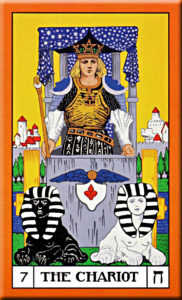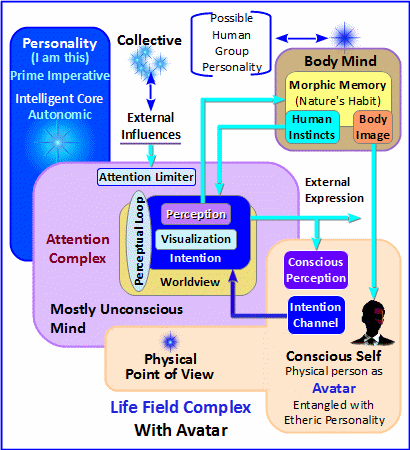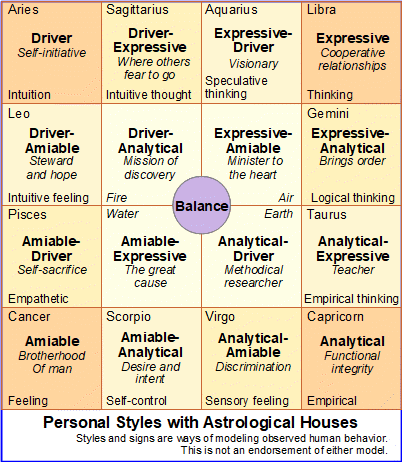 Introduction
Introduction
 This essay is about our nonphysical nature; our conscious mind, memories and that unconscious part of our mind we sometimes meet in our dreams. It is for you to decide, but it has been my experience that our happiness and progression depend on our informed life choices. If the Implicit Cosmology is reasonably correct, it must be understood that what we do in this lifetime will affect the rest of our eternity.
This essay is about our nonphysical nature; our conscious mind, memories and that unconscious part of our mind we sometimes meet in our dreams. It is for you to decide, but it has been my experience that our happiness and progression depend on our informed life choices. If the Implicit Cosmology is reasonably correct, it must be understood that what we do in this lifetime will affect the rest of our eternity.
The subject is important to you because understanding the more universal nature of who you are will help you to change your perspective from inside of your head (your body’s head) to that of your etheric personality, which is who you really are; your intelligent core.
It is important that you understand that the entire subject of mind independent of body is rejected by mainstream science. What I say here is theoretical and only partially supported with good research. While even more is supported with citizen scientist’s field studies and many revelations from across the veil, you also need to be mindful that a four-year electronic engineering graduate is writing this essay. There is need for your informed discernment.
Perspective
How a question is looked at has a lot to do with how it is answered. A person’s normal perspective is that of being the body (I am this person). We look at the world through our body’s eyes from the perspective of within our head. This is natural. We have had this perspective since birth. However, if we are immortal personalities temporarily living in this lifetime, hosted by our physical body, then the more correct perspective is to say, “This is my body, but my true self is not physical.” So, you might say that the usual perspective is body-centric but that the more correct perspective is personality-centric.
Here, personality is used to indicate the intelligent core of the complex of influences and functional areas that composes our whole self. In this view, personality is the immortal intelligent core while the human body is an avatar-host for personality’s conscious self.
Our Body is a Complete Organism
The Avatar Model is a good way to consider the relationship between personality and body, but what about the body? Parapsychologist, biologist Rupert Sheldrake has proposed the Hypothesis of Formative Causation.1 In it, he hypothesizes that the morphogenetic development of physical organisms, such as our body, is organized by a subtle energy, morphic field which holds the body image and the necessary rules for its development.
 He describes the body image in morphic fields as Nature’s habit or how a particular species has always formed. This memory can be changed by successfully creative solutions to environmental challenges. Some of these during the lifetime changes are retained in Nature’s habit, allow for evolution of the species. This memory also includes instincts which help to govern the organism’s behavior. The life field is shown in the Functional Areas of a Life Field diagram.
He describes the body image in morphic fields as Nature’s habit or how a particular species has always formed. This memory can be changed by successfully creative solutions to environmental challenges. Some of these during the lifetime changes are retained in Nature’s habit, allow for evolution of the species. This memory also includes instincts which help to govern the organism’s behavior. The life field is shown in the Functional Areas of a Life Field diagram.
If you look at morphic fields as life fields that contain functional areas for worldview (memory), perception, levels of consciousness and a means of expression, then the human body life field is essentially the same as our personality life field. By that, I mean that our worldview is directly comparable with Nature’s habit. The one major difference appears to be that our instinct is to gain understanding through experience and our body’s instinct is primarily to survive in the physical world.
The message is that, during our physical lifetime, we share worldview and many of our perceptual and expressive abilities with our physical body. However, as shown in the Life Field Complex diagram (below), the morphic field for our avatar also has a functional area representing Nature’s habit. This might be compared to personality’s intelligent core.
Our Body as Avatar
Based on current understanding, our body has a consciousness which is not completely suppressed during a lifetime. In fact, the relationship is at least to some extent, a symbiotic one in which our daily choices are often greatly influenced by our body. A person gains in maturity by learning to cooperate with the body consciousness while remaining true to the ideals of balance and evolution toward greater understanding. Learning to do so is what we call maturity. It helps to understand how to distinguish between our body’s instincts and our understanding.
To do this, it is necessary for personality to recognize the difference between its inherited urge to understand and the body’s instinctual urge to survive. It is also a challenge to distinguish between the beliefs that are taught by our local culture and the actual nature of reality as it is understood when those beliefs are set aside. This can best be accomplished when we are aware that we are not our body.
Assumptions
So how should we think of ourselves while in this physical lifetime? Our language is decidedly body-centric, so how do we talk about what it is like to be personality-centric? Here are a few assumptions that will help us decide:
Avatar
In Hinduism, an avatar (from Sanskrit for descent) is a deliberate descent of a deity to Earth. The term can be translated into English as “incarnation.” A person is an immortal self entangled with a human body in an avatar relationship.
In the avatar relationship, the personality remains associated with the etheric aspect of reality but its perspective is associated with the physical body and experiences the physical as if it is its physical body. In trying to understand this relationship, the most important thing to remember is that we do not know much about how humans might behave if they did not have an entangled personality. While it is necessary to make a few assumptions for informed speculation, the underlying rule should be that humans are life forms which deserve respect and good care as hosts that enable our existence in the physical. Assumption number one is that our etheric personality cannot exist in the physical without entanglement with a human.
The relationship between etheric personality and the human avatar is shown in the Life Field Complex Diagram which is based on the Trans-Survival Hypothesis. The diagram is titled Life Field Complex because it was drawn for the Implicit Cosmology which consists of a series of essays exploring the implications of survival.
Notice in the Life Field Complex Diagram that the Attention Complex (middle) is shared by the etheric personality (upper-left) and the complex representing the human body consciousness (upper-right). The actual human body is in the box marked Avatar (lower-right). This relationship is discussed below.
Cooperation Between Personality and Avatar
At the time of personality’s entanglement with its human avatar, its worldview is populated with a subset of understanding and the urge to gain further understanding, all inherited from a source personality. As is shown in the Life Field Complex Diagram, in an avatar relationship the conscious self shares worldview with its human avatar. This shared memory is the main point of this discussion, because beginning at birth, the dominant conscious self must learn to manage the human influence, even as it learns to adapt to its local reality.
An example of the human influence’s persistence is demonstrated by the way we frequently hear in transcommunication that newly transitioned communicators still identify with their physical body. Some communicators even report something like a getting well period as they become accustomed to healthy mind and body. This suggests that people remain under the influence of the human body image well after the body dies.
Understanding the avatar relationship can help us live a productive life from the perspective of following inherited urges from personality while managing our body’s instincts. The challenge is in learning how to distinguish what are our body’s issues and what are real to our personality.
Each avatar relationship begins with a blend of personality characteristics, and one way to make an informed guess as to what those characteristics are is to look for characteristics that we were born with that influence our behavior today. If the avatar hypothesis is correct, then the human part of our worldview should be memory, beliefs and instincts related to survival. Understanding and inclinations inherited from our etheric personality should be related to increasing understanding. For instance, responding to peer pressure would support herd or tribal safety but it would also tend to restrict learning. In a similar way, compulsive behavior would seem to suggest instincts while obsessive curiosity would seem to support learning.
Personal Style and Astrology
Just as people are born left or right-handed, people are born with basic personality traits that tend to influence their behavior. Personal styles are cataloged and studies in psychology as a means of understanding human behavior, and have been adapted to teach salespeople how to relate to customers. The simplest categorization method shown in the Personal Styles diagram below was developed by Merrill and Reid3 for sales training. They are:
Analytical: Thinking, thorough, disciplined
Amiable: Supportive, patient, diplomatic
Driver: Independent, decisive, determined
Expressive: Good communicator, enthusiastic, imaginative

Each basic style is typically further divided so that a person might be seen as a Driver-Analytical or a Drive-Expressive. The point of these styles is that people likely begin dealing with a situation from the perspective of one of these styles. The question is whether or not this personality inclination is inherited from personality or from avatar.
The idea of astrology is that people’s behavior is influenced by the astrological conditions at the time of their birth. A year is divided into twelve signs based on the ancient zodiac and each indicates a different set of personality characteristics. The Personal Styles diagram above shows a suggested relationship between astrological signs and the four personal styles.
It is important to note that personal styles and astrology are not being recommended here. They are used to demonstrate that people do tend to display personality characteristics that are evident at a very young age and which tend to shape their lives.
There appears to be general agreement between characteristic suggested by both systems; however, the personal styles are more often described in terms of information acquisition or community, while the astrological signs tend to emphasize the same sort of characteristics usually associates with instincts. For instance, an Aries who is a person born between March 21 and April 20 is described as (amongst other qualities) impulsive, physical and driven. Aries is related to a Driver in the Personal Styles diagram, and a Driver is described in terms like Independent, decisive and determined. A Capricorn (December 23 to January 20) is described as (amongst other qualities) instinctive, over-reacting and moody but it is compared to an Analytical who is described in terms of thinking, thorough and disciplined.
Since there is so little known about this from the personality-centric view, it must be left for us to take the initiative to study and self-analyze. The interpretation of astrological signs and personal styles offered here is just an opinion, and your experience may be different. Again, these are examples indicating the kind of cures you would look for if you conduct a self-appraisal.
Balance
Notice the center circle in the Personal Styles diagram labeled Balance. As you come to better understand yourself and your avatar, and therefore gain in maturity, you will find yourself converging on the middle way. The secret information taught by ancient wisdom schools is often that balance is the middle way toward maturity. This does not mean a balanced person would never express an extreme behavior, only that such a person would consciously do so, strategically for a purpose and then return to the center without attachment for the outcome of his or her actions.
Human Animal
The human brain can be considered in two parts: forebrain and the brain stem. From Brain Structures and their Functions, the brain stem: “… is responsible for basic vital life functions such as breathing, heartbeat and blood pressure. Scientists say that this is the ‘simplest’ part of human brains because animals’ entire brains, such as reptiles (who appear early on the evolutionary scale) resemble our brain stem.”2
The forebrain supports rational thought, so an assumption is that the brain stem has evolved to support survival of the human body and the forebrain has evolved to support the entangled personality. In this view, it is reasonable to expect that humans would get along pretty well without an entangled personality, just as do other animals.
Irrational Behavior
Do you have a pet; perhaps a dog or cat? If so, you may have noticed a lot of behavior that seems to be irrational. For instance, it might be fearful of an unexpected object in the backyard or it might be unreasonably afraid of men, especially strangers. Sure, you would think it is just behaving like an animal. Animals often seem irrational. That is one of the distinguishing characteristics between humans and animals.
But what if you have irrational behaviors? Are you afraid of the dark? Do you go out of your way to avoid strangers? Is it difficult to warm up to people of the opposite sex? Are these behaviors rational? Do you have reasons for them which are more than just an excuse?
Everyone has fears that might be more exaggerated than circumstances would seem to require. The usual way of dealing with them is to talk the person out of the fear, either by appealing to logic or by showing that there is no need for fear; in effect, wear out the fear response. In the body-centric view, we naturally appeal to the rational mind; that part of us that is supposed to be logical, thinking and learning. However, in the personality-centric view, it can be seen that the human animal is the source of irrational fear. Because of the entangled avatar relationship, the human instincts are part of the shared worldview, which is in turn, the governing factor of the Perceptual Loop of a life field. As such, too often, the strongest and first response to an external influence is the human animal’s fight or flight reaction.
It is natural that a young person will more often respond to circumstance from the animal’s instincts, but over time, it is expected that the person will more often have a rational response. That is the idea of maturity. Even so, people are plagued all of their lives with an unrecognized human influence. So long as they think with a body-centric point of view, it will be natural for them to seek to suppress the animal response, rather than understanding the necessity to more directly manage the Perceptual Loop through mindfulness.
A better model for therapy might be to learn how to appeal to the animal in us, rather than the rational personality. We need a human whisperer more than we need a psychologist.
May I Introduce Myself?
With these considerations, then, how should we think of ourselves? How do we think with a personality-centric point of view? Each of us will have different takes on this but there are general points that should be considered.
To begin, try thinking of yourself as two people. For instance, I am Tom Butler. Butler is the family name of my body and it serves to give you a sense of its lineage. Perhaps we can call my body Mr. Butler. Tom is a good name for my personality in this lifetime, so a proper introduction might be “Hi, I am Tom and this is Mr. Butler.”
Mr. Butler was born in May, and according to astrology, should be stubborn, think habitat is very important and have a strong dependence on tactile sense. When compared to characteristics of other signs, this is pretty accurate. According to the avatar model, these characteristics should provide hints about the nature of Mr. Butler.
My astrological chart always seemed to indicate more what I need to overcome than be driven by, but I also fall into the Analytical-Expressive side of the personal styles chart which is where I feel comfortable. Again, according to the avatar model, these characteristics should provide hints about Tom and Mr. Butler’s nature.
References
-
Sheldrake, Rupert, “Morphic Resonance and Morphic Fields,” Rupert Sheldrake Biologist and Author, www.sheldrake.org/Articles&Papers/papers/morphic/morphic_intro.html.
-
Kinser, Patricia Anne (2000), “Brain Structures and their Functions,” Serendip Studios, serendip.brynmawr.edu/bb/kinser/Structure1.html.
-
David W. Merrill, Roger H. Reid, “Personal Styles and Effective Performance,” Chilton Book Company, 1981
![]()
